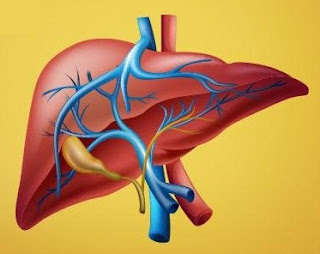Gilbert’s Disease (Idiopathic Unconjugated Hyperbilirubinemia)
-An autosomal dominant, benign
condition, in which there is a mildly elevated unconjugated bilirubin, without
either structural liver disease or hemolytic anemia.
-It possibly results from an
impaired uptake and conjugation of bilirubin, secondary to a deficiency of UDP
glucuronyl transferase.
-The diagnosis is made on a level of
unconjugated bilirubin of 17–102 mmol/l, alternatively, a serum total bilirubin
of 25–50 mmol/l after a 24-h restricted diet.
Preoperative abnormalities:
1. Serum unconjugated bilirubin is
increased, but usually to a level <50 mmol/l, and clinical jaundice is
barely detectable. However, fluctuating mild jaundice may occur, particularly
in the presence of stress, infection, starvation, or surgery.
2. Other liver function tests are
normal, and there is no hemolytic anemia.
Anesthetic Problems:
1. The condition itself is of no
significance. However, the appearance of jaundice postoperatively may suggest
more serious problems, therefore the confirmation of Gilbert’s syndrome as the
cause is useful.
2. Starvation may elevate the
bilirubin level and produce visible jaundice.
3. The metabolism of morphine, and
papaveretum, may be delayed.
4. There are potential toxicological
implications for any drug or chemical that is eliminated primarily via
glucuronidation mechanisms such as paracetamol.
Anesthetic Management:
1. If Gilbert’s disease is
suspected, the administration of nicotinic acid 50 mg IV will double or triple
the plasma unconjugated bilirubin within 3 h. In normal patients, or in those
with other liver diseases, the increase will be less.
2. Morphine, papaveretum, and
paracetamol should be used with caution.
3. Early morning surgery and a
dextrose infusion will reduce the increase in bilirubin provoked by starvation.

























